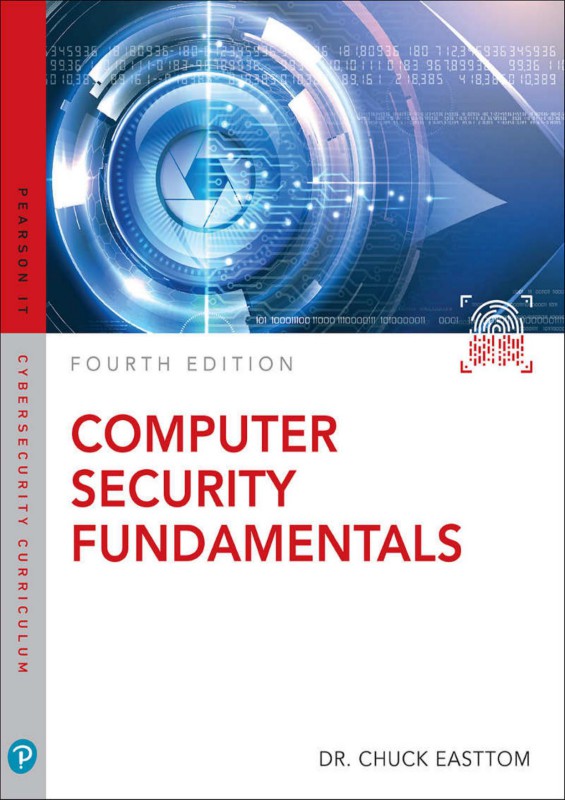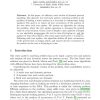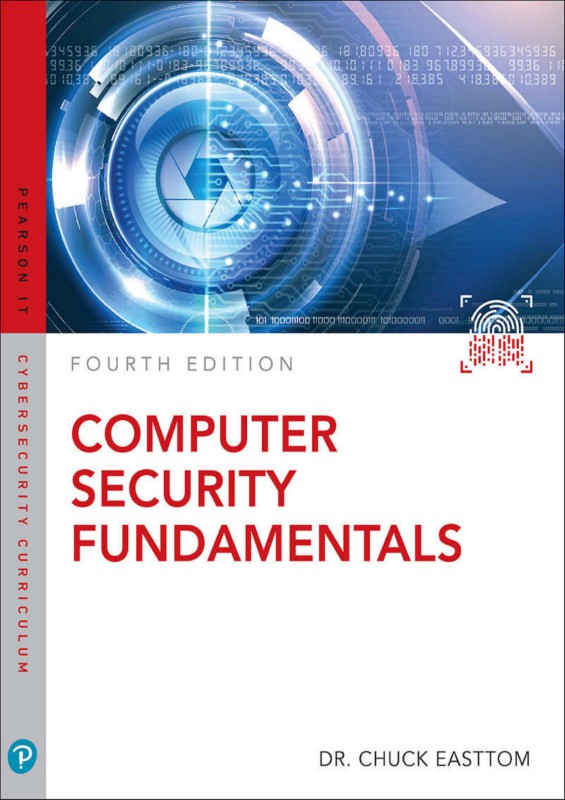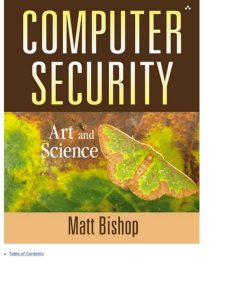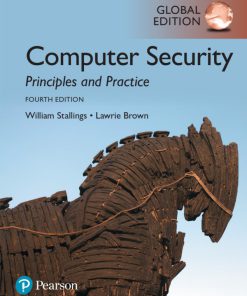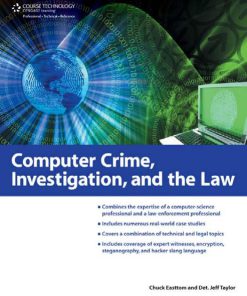Computer Security Fundamentals 1st edition by William Easttom II ISBN 0135774772 978-0135774779
Original price was: $50.00.$25.00Current price is: $25.00.
Authors:Chuck Easttom , Series:Cyber Security [59] , Tags:Cyber Security; Computers & Information Technology , Author sort:Easttom, Chuck , Ids:Google; 9780135774779 , Languages:Languages:eng , Published:Published:Oct 2019 , Publisher:Pearson Higher Education & Professional Group , Comments:Comments:Computer Security Fundamentals, Fourth Edition: Clearly explains core concepts, terminology, challenges, technologies, and skills Covers today’s latest attacks and countermeasures The perfect beginner’s guide for anyone interested in a computer security career Chuck Easttom brings together complete coverage of all basic concepts, terminology, and issues, along with all the skills students need to get started. Drawing on 20+ years of experience as a security instructor, consultant, and researcher, Easttom helps students take a proactive, realistic approach to assessing threats and implementing countermeasures. Writing clearly and simply, he addresses crucial issues that many introductory security books ignore, while addressing the realities of a world where billions of new devices are Internet-connected. This guide covers web attacks, hacking, spyware, network defense, security appliances, VPNs, password use, and much more. Its many tips and examples reflect new industry trends and the state-of-the-art in both attacks and defense. Exercises, projects, and review questions in every chapter help students deepen their understanding and apply all they’ve learned. Whether you’re a student, a professional, or a manager, this guide will help you protect your assets–and expand your career options. The most up-to-date computer security concepts text on the market Strong coverage and comprehensive analysis of key attacks, including denial of service, malware, and viruses Covers oft-neglected subject areas such as cyberterrorism, computer fraud, and industrial espionage Contains end-of-chapter exercises, projects, review questions, and plenty of real-world tips Instructor’s guide, lecture slides, and test bank included to make planning for class a breeze One-volume coverage of all the core concepts, terminology, issues, and practical skills modern computer security professionals need to know The most up-to-date computer security concepts text on the market Strong coverage and comprehensive analysis of key attacks, including denial of service, malware, and viruses Covers oft-neglected subject areas such as cyberterrorism, computer fraud, and industrial espionage Contains end-of-chapter exercises, projects, review questions, and plenty of real-world tips

